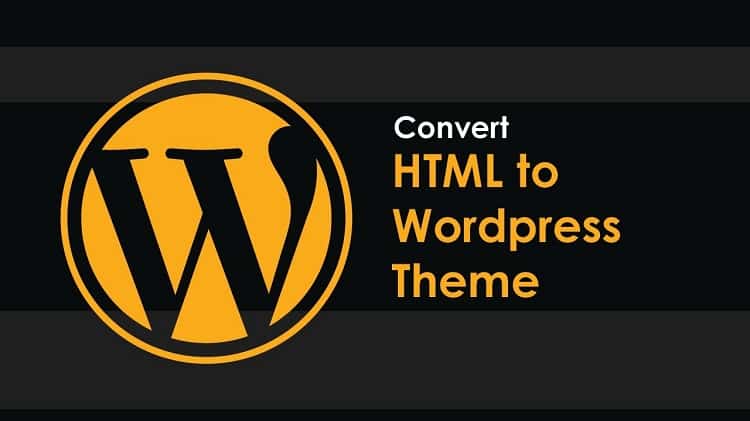Even though there are ready-made templates available, there are many who want to use the same HTML template in WordPress. This is because while making the transition from HTML to WordPress, they do not want the audiences to feel different. Moreover, it is quite easy to make suitable templates in HTML and therefore, some people want to use the HTML template in WordPress. There are different ways available to make a transition from HTML template to WordPress theme.
Ways To Convert HTML Template To WordPress Theme –
1. Manually – It is a technical move, and you need to have enough knowledge of coding. This is because you are going to use your existing code and convert it into WordPress theme files. It is not complicated if you have knowledge of HTML, CSS, and PHP knowledge. Most of the work is just copy and paste with modifications here and there.
2. WordPress Child Theme – Rather than doing it manually, it is far better to opt for HTML to WordPress via WordPress child theme. It is very easy and requires less effort. In this, you are going to use a basic and ready-made WordPress theme and convert it as HTML template. Therefore, instead of starting from HTML template to WordPress theme, you are starting with WordPress theme and modifying it to look and feel exactly like HTML template. Therefore, the basic features and functionalities of WordPress theme will stay intact, and it will sync well with the overall system.
3. Import Content – If you can find a relatable WordPress theme that looks close to your HTML theme, the task will be easier. This is because it does not matter how good a programmer you are when you convert an HTML template into a WordPress theme, there are always some features and functionalities missing. These features and layouts are exclusively available in ready-made WordPress themes. Therefore, if you prefer to use a WordPress theme, then you can just import the content from the HTML template. It is a quick and painless process, and your website will be better for you and your audiences.
Elaborating The Processes –
1. Manual Transition –
You need to create a theme folder, and you can do on your desktop. Then you have to create a number of text files namely, style.css, index.php, header.php, sidebar.php, and footer.php. You have to copy the existing CSS from HTML template to WordPress style.csss. Besides, you have to divide your HTML template into multiple parts namely, header, sidebar, footer and body(index). If you already have them divided, it is better.
Otherwise, you have to do it manually and carefully. Moreover, there are a lot of technical changes you have to make starting from <link> tag to PHP code wherever appropriate. When everything is done, you have to upload the theme folder in a ZIP file and then install WordPress and go to Appearance> Themes> Add New and Upload. Select the Zip file and install after uploading.
2. Via WordPress Child Theme –
First, you have to choose a suitable theme which can be a framework and starter theme. The basic structure will be present, and you have to create a theme folder. Then you have to go on to create the style.css and functions.php and inherit all the parent styles. Instead of activating the parent theme, you have to activate the child theme. All the things of the parent theme will be overridden by the child theme features and functionalities. You got to make the necessary changes, and you can watch the changes as the child theme will be live.
3. Importing Content –
As mentioned previously, the third method involves transferring only the content as the theme will be from WordPress. There is no technical change required. There is a dedicated plugin available to import, and it is named HTML Import 2. Install it and activate it and you need to have all the HTML files on your server. You can import a single page as well as multiple at once.
You will come across a configuration screen where you have to fill all the details perfectly so that the files sync with one another perfectly. The configuration screen has many tabs which address specific items and sections of the theme. Starting from title, metadata, and categories to tags, custom fields, and much more, everything is present for a perfect transition.
If you think that the process is tough for you, you can always opt for paid services to convert your HTML template to WordPress theme seamlessly. It is a better option as the professional service providers can do it perfectly and in less time. The cost will depend on the complexity of the HTML template. Besides, it is easier to move the HTML 5 template to WordPress theme because most of the things are easily convertible.

